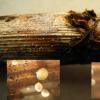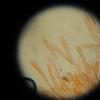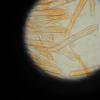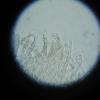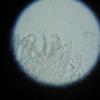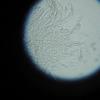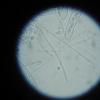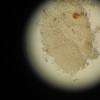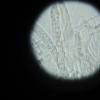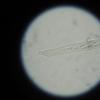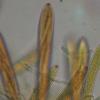
21-12-2025 09:32
Hello.A tiny ascomycete found embedded in wood in

22-12-2025 00:47
Patrice TANCHAUDBonsoir, récolte à proximité du milieu dunaire

21-12-2025 21:32
Pol DebaenstHello, Garden, Burgweg 19, Veurne, BelgiumOn 10/1

21-12-2025 21:40
Isabelle CharissouBonjour, j'aimerais connaitre les références de

21-12-2025 21:31
Pol DebaenstHello, Garden, Burgweg 19, Veurne, BelgiumOn 10/1

21-12-2025 21:31
Pol DebaenstHello, Garden, Burgweg 19, Veurne, BelgiumOn 10/1

20-12-2025 23:08
Patrice TANCHAUDBonsoir, récolte sur sol sablonneux dans l'arri�

20-12-2025 15:47
Mirek GrycHi.These grew on pine wood that was heavily covere
Encore sur Renouée du Japon : cette colonie de petits disco sessiles, diam jusqu'à 0,6 mm.
Hymenium jaune pâle, extérieur feutré blanc.
Spores fusiformes parfois un peu arquées 3,5-4,8 x 18-24 µ , finalement 1 septées (?).
Asques 9,5 x 87 µ , J- dans Melzer et Lugol.
Je m'orientais vers Dasyscyphus diminutus mais mes spores sont trop grandes.
Avez-vous une autre piste ?
Michel

Is the ascus apex indeed inamyloid? I first thought it is red. Too minute to see clearly. Did you use oil immersion?
Zotto
Thanks for your quick answer.
I first observed in Melzer and than in Lugol --> no blue and no red tint.
The micros in that post have been made in Ammoniacal Red Congo.
I'vent use immersion lens and so I'vent see paraphysis or hairs.
I re-try tomorrow.
Michel

Hi Michel,
"I first observed in Melzer and than in Lugol --> no blue and no red tint.
The micros in that post have been made in Ammoniacal Red Congo."
The first observation has always to be done in water - to see the characters in living stage. Spore and paraphysis contents (for instance) are most important and are destroyed by using letal preparation media as Melzer (with chloral hydrate) and ammonia. Lugol is a vital stain but has to be put to a water preparation. To use Melzer is completely unuseful in discomycetes because it prevents a possible hemiamyloid reaction.
All "old" knowledge, nearly all first observed by Zotto.
Regards from Lothar
Michel
I followed your advices, hereunder the results of the new observations:
1- In water:
Hairs diam 4,8µ septated, encrusted, slihtly curved at the top.
Paraphysis cylindrical, septated, smouth, diam 2,6µ
Asci 12,8x110µ, without croziers (? I have not habit for that, see the photos)
Spores fusiforms, 4,2-4,5x20-22µ with numerous guttules or oil drops (?)
Textura : sorry for the bad photo, perhaps globularis ?
2- After Lugol add:
The wall of ascis turned blue violet.
No change for other elements
3- Immersion x1000 :
Spores 3,2-3,4x17-18µ , I think not septated.

For me this is an unknown species. No idea, maybe comparable to the genus Erioscyphella recently resurrected by Branislav Peric and me.
Ah, now I see, we had this species on Arundo by J. Castillo (7.12.2015) and on Phytolacca by JeanPaul Priou (19.11.2011). That on Arundo seemed to be inamyloid but that on Phytolacca was IKI red at the apex.
I cannot see the blue-violet reaction you mention. Michel, could you send me your pics attached in a mail, they are too strongly reduced. (zotto@arcor.de)
Zotto

http://www.ascofrance.fr/search_forum/39301
Iodine reaction uncertain, perhaps because Lugol too diluted.
And here is the Phytolacca specimen by Jean-Paul (I hope he doesn't mind).
Distinctly hemiamyloid.
Zotto

